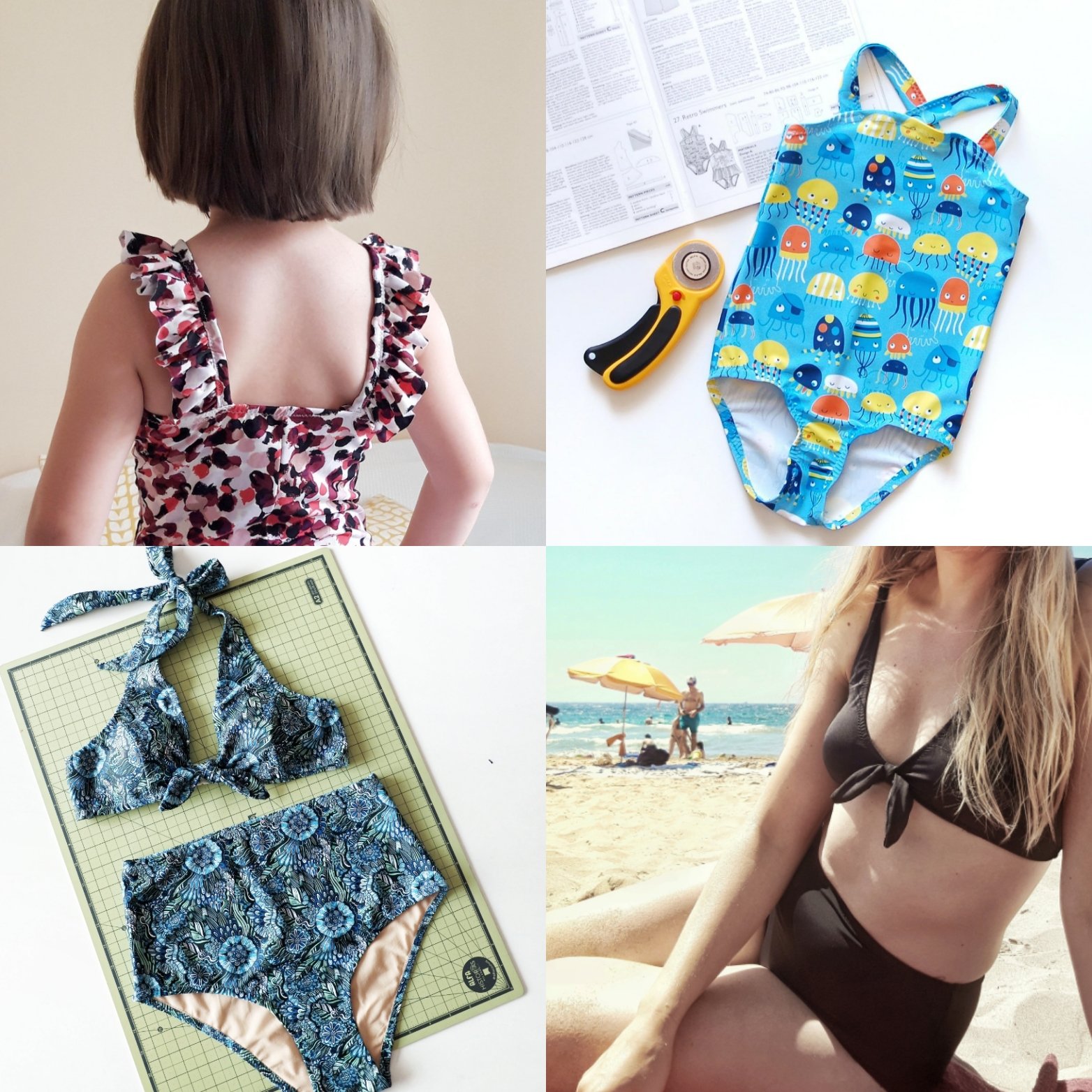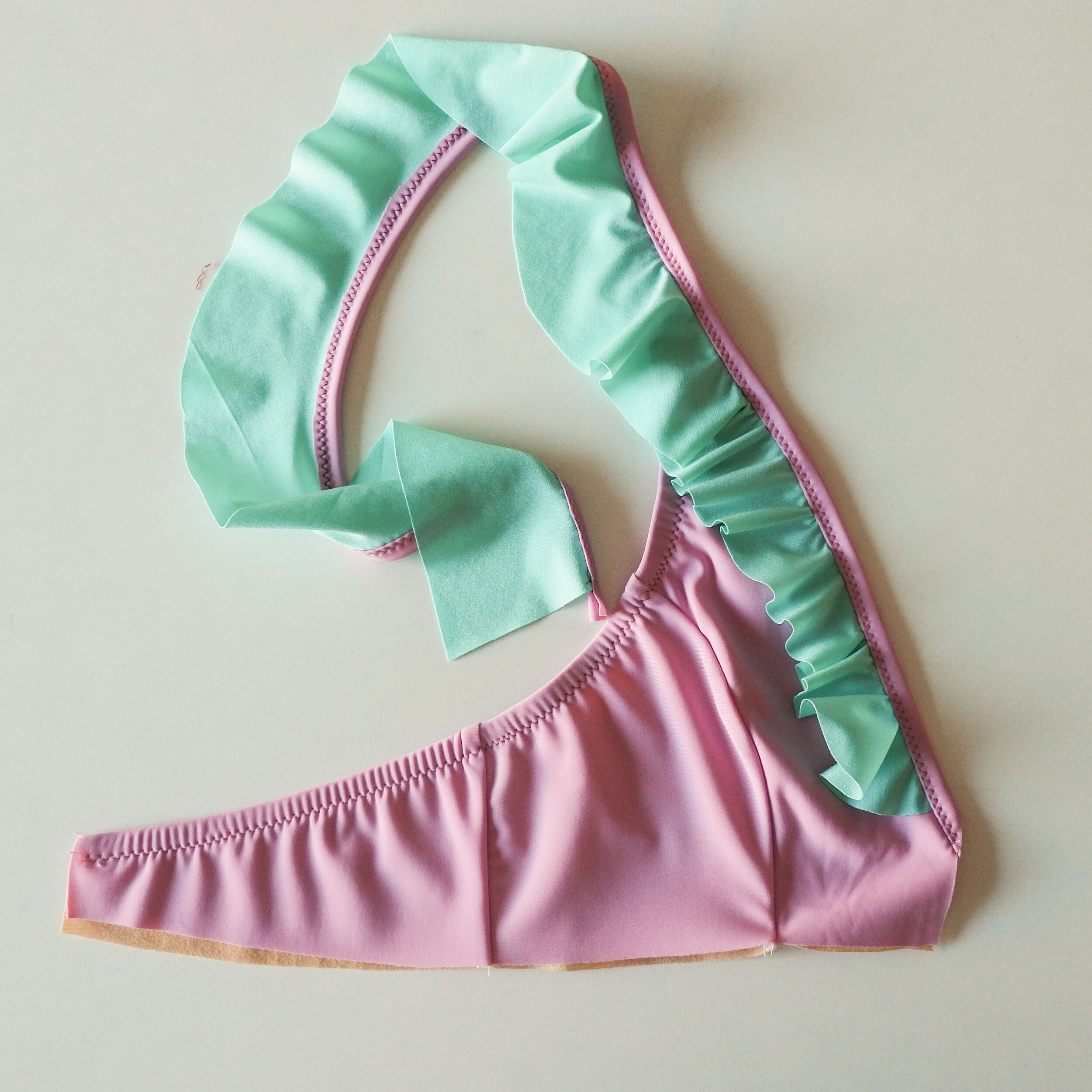Both the bikini top and the bottoms are fully lined and neatly finished so your garments look great both on the outside and on the inside. To sew this bikini you need swim fabric (either lycra or polyester swim fabrics with 4-way stretch work fine), swim lining and swimwear elastics. This type of elastic, also called swim rubber, is a specific elastic that’s resistant to chlorine and sun damage. You also need a stretch needle for knit fabrics and a good quality polyester sewing thread.
I won’t be having specific kits available at the shop this time (we’re only selling lingerie supplies at the moment…) but the supplies are available in many online stores and I’m sure that your local fabric shops have some selection of fabrics and notions too. Here’s a small list of online shops that carry swim fabrics:
Blackbird Fabrics, The Fabric Store, Funkifabrics, The Fabric Fairy, Spandex House, Mood Fabrics, Spoonflower, Tailor Made Shop.
Tanto el sujetador como las braguitas están forradas totalmente para que tus prendas se vean bien tanto por fuera como por dentro. Para coser este bikini necesitas lycra de bañador (tejidos de punto de lycra o de poliéster con elasticidad en las dos direcciones van bien), forro de bañador y elástico de bañador. Este elástico también llamado goma virgen o elástico de gaucho es resistente al cloro y al sol. También necesitas aguja stretch para telas de punto e hilo de poliéster de buena calidad (por ejemplo el Mara de Gutermann).
No voy a tener kits específicos en la tienda esta vez (seguimos por el momento vendiendo solo materiales para coser lencería…) pero hay materiales para coser prendas de baño en muchas tiendas online y estoy segura de que algo habrá también en las tiendas locales. Aquí va un listado pequeño de tiendas online internacionales: Blackbird Fabrics, The Fabric Store, Funkifabrics, The Fabric Fairy, Spandex House, Mood Fabrics, Spoonflower, Tailor Made Shop.
En España no he visto muchas telas de lycra bonitas como para elegir entre mil pero hay cosas si buscas. De tiendas online en Tejidos de Moda han traído este verano unas lycras de cuadros muy bonitas y en Cal Joan también hay algo de estampados y bastantes lisos (si sabes de alguna otra tienda que venda lycras bonitas no dudes en decirmelo, así lo puedo mencionar por aquí!). Aquí en Madrid hay algo de lycras en Ribes y Casals (aunque su variedad es muy limitado considerando que es una de las tiendas más grandes por aquí…) donde sí que tienen el forro de bañador en color crudo, negro y blanco. En Julián López también suele haber unas cuantas lycras, allí se consiguen muy buenos precios en las rebajas que empiezan en el final de junio. En Donna Tela tienen estampados bonitos, especialmente infantiles que combinan con sus algodones.
El elástico de bañador, cierres y demás cosas lo venden en la mayoría de las mercerías más grandes pero donde mejor sale de precio es en Seoane Textil.







































































